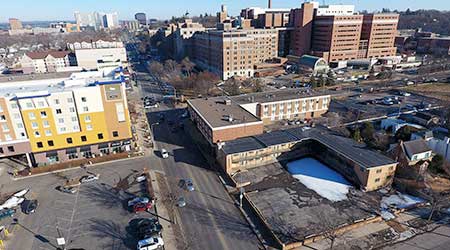
Maintenance Matters: University Tackles Repair Backlog
June 7, 2018
The waves of deferred maintenance affecting institutional and commercial facilities nationwide tend to hit public facilities hardest, given the limited funding generally available from taxpayers. The issue also tends to strike large organizations harder, given the larger numbers of facilities they must maintain.
Given these factors, it’s easy to see why the burden of deferred maintenance is especially heavy for very large public organizations.
Consider the challenges facing the University of California (UC) as it squeezes growing numbers of students onto overcrowded campuses with deteriorating buildings and equipment. Over the past two decades, as state funding for higher education declined, California’s public research university increased class sizes, sometimes failed to maintain basic infrastructure like roofs and cooling systems, and put off construction projects — even as it enrolled an additional 90,000 students.
The result is a deferred maintenance backlog that UC estimates at $4 billion and fears among faculty and administrators that the system, once the envy of the rest of the country, is beginning to lose its luster.
California Gov. Jerry Brown seemed to hear the university’s plea recently when he added to his proposed 2018-’19 budget a one-time infusion of $100 million each for UC and California State University to make campus repairs. The funds are part of a larger effort to upgrade the state’s ailing infrastructure, but they will only cover a fraction of the backlog and do not account for the university’s long-term need for new buildings, according to CALmatters.org.
The scope of the problem has been difficult to quantify, so the university is spending $15 million to send a team of experts to assess the condition of facilities on each campus, a study that won’t be complete until 2021. Why so lengthy and costly?
It is an “ambitious project that includes not only having someone visually assess every square foot of UC buildings and infrastructure but using that information to make reliable, consistent estimates of both current and future needs,” UC spokeswoman Claire Doan replied in an email. She added that it would produce a deferred maintenance forecast for about 64 million square feet of state-supported space.
While the state is flush with cash from higher-than-expected tax revenues, Brown has repeatedly warned of a coming recession. Instead of adding to California’s ongoing expenses, he wants to spend part of the $9 billion surplus on one-time projects and sock the rest away in the state’s rainy day fund.
This Quick Read was submitted by Dan Hounsell — dan.hounsell@tradepressmedia.com — editor-in-chief of Facility Maintenance Decisions, and chief editor of Facilitiesnet.com.
Next
Read next on FacilitiesNet












